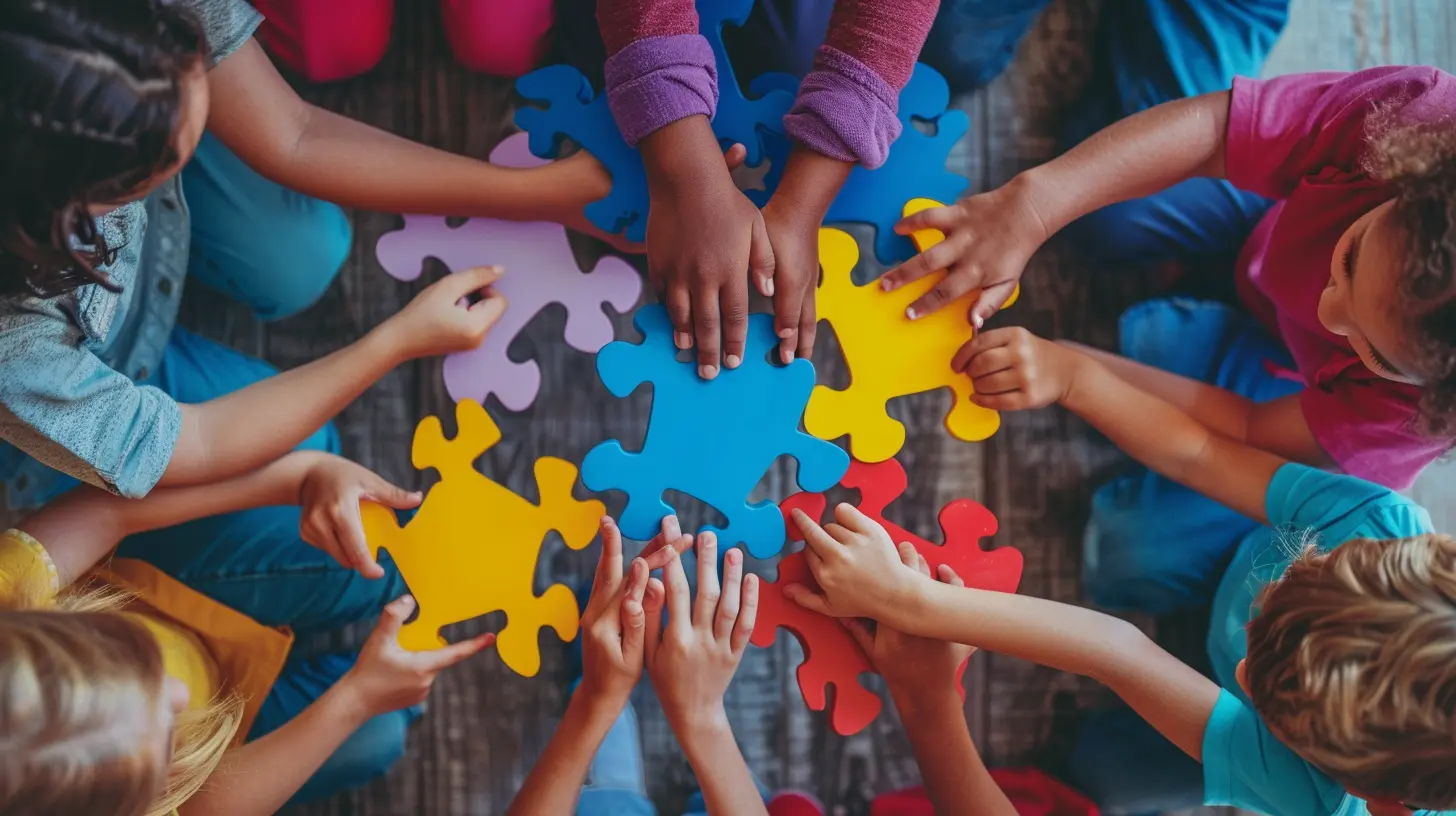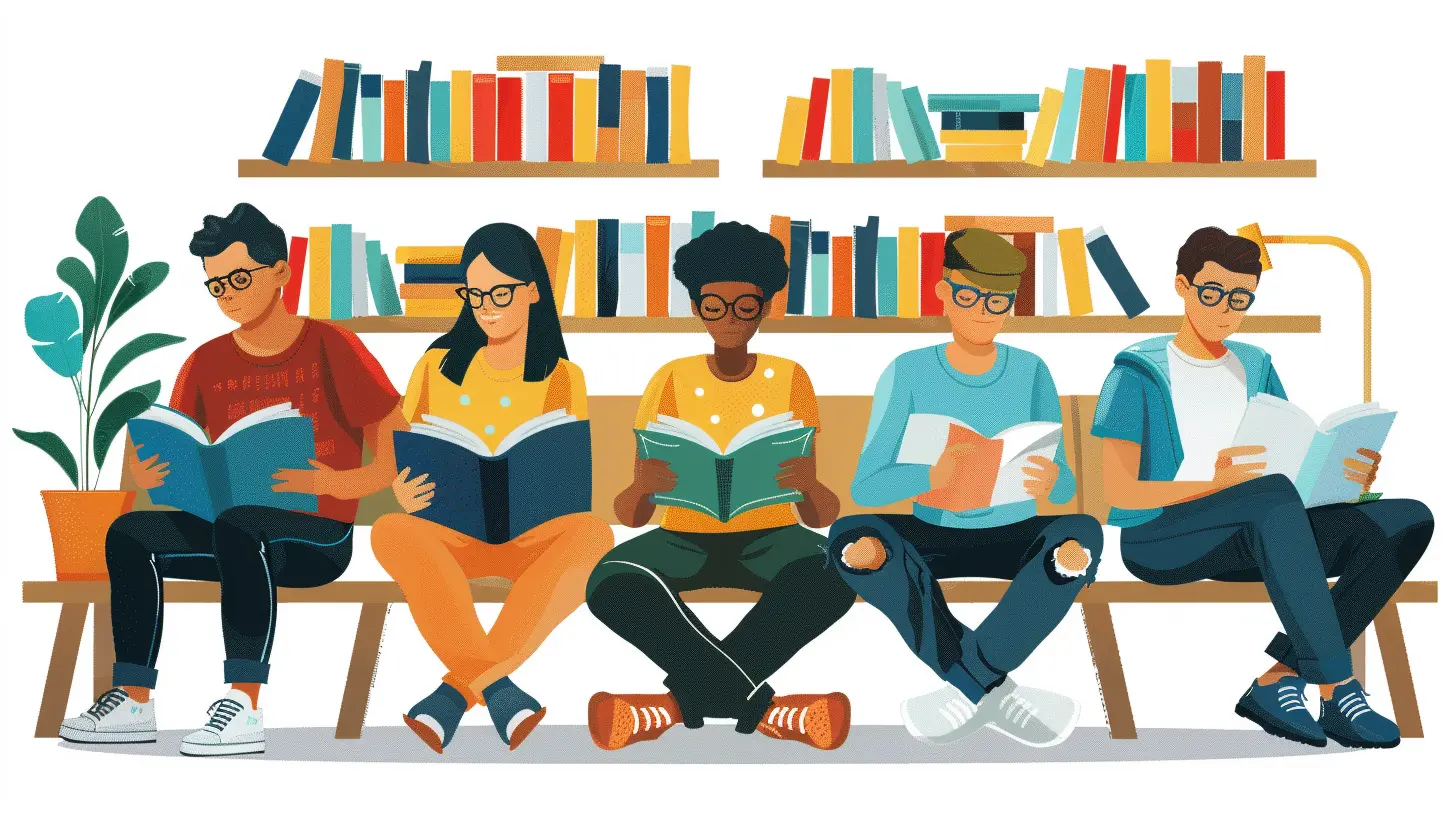Empowering Struggling Students Through Peer Tutoring
26 August 2025
Let’s be honest—school isn’t easy for everyone. Some students excel effortlessly, while others feel like they’re constantly swimming upstream. But guess what? Struggling doesn’t mean failing. In fact, it’s often just a sign that a student hasn’t found the right support yet. One of the most underrated tools in the academic toolbox is peer tutoring, and it’s making a big comeback. Today, we'll dive deep into how this approach has been quietly transforming classrooms and empowering struggling students in ways most of us never imagined.

The Struggle Is Real: Why Some Students Fall Behind
We’ve all seen it—or maybe we’ve even been there. A student quietly stares at a blank worksheet while the rest of the class forges ahead. There could be a dozen reasons behind this: learning differences, language barriers, lack of confidence, or maybe just not connecting with the teaching style.Here’s the kicker: many of these students aren’t less intelligent. They just need a different way in—and that’s where peer tutoring shines.

What Is Peer Tutoring, Really?
At its core, peer tutoring is a simple but powerful concept: students help other students learn.It’s not about replacing the teacher, and it’s definitely not a shortcut to good grades. Think of it more like a buddy system for learning. A student a little further down the academic road offers guidance, support, and clarity to someone still figuring things out.
Imagine trying to climb a steep hill alone, then someone comes along and gives you a hand. That’s what peer tutoring does—it boosts, guides, and lifts.

Why It Works: The Magic Behind Peer Tutoring
So, why is peer tutoring so effective, especially for students who are struggling?1. It Lowers the Pressure
Teachers are great, but let’s face it—some students find them intimidating. Peer tutors, on the other hand, feel more like teammates than authority figures. This relaxed atmosphere encourages questions and reduces the fear of sounding “dumb.”2. It Speaks Their Language
Ever notice how students sometimes explain things in a way that just clicks? That’s because they’re using the same vocabulary, references, and context. It’s like getting directions from someone who’s just been where you are versus reading a complicated map.3. It’s Totally Customizable
Peer tutoring is adaptable. Whether it’s one-on-one or a small group, it can be tailored to meet students where they are. Need to go over fractions five times? No problem. Want to hear a concept explained differently? Done.4. It Builds Confidence (On Both Sides)
This is a two-way street. The tutor gains leadership skills and a deeper understanding of the subject, while the tutee starts to believe, “Hey, maybe I can do this.” Confidence leads to motivation, and motivation fuels success.5. It Encourages Responsibility and Empathy
Let’s not underestimate the life skills here. Both tutors and tutees learn patience, empathy, and accountability—qualities that go way beyond academics.
Real-Life Results: How Peer Tutoring Changes the Game
There’s hard data backing all this up. Studies have shown that peer tutoring can:- Improve academic performance and retention
- Increase motivation and engagement
- Enhance classroom relationships
- Reduce dropout rates
- Create a more inclusive learning environment
But outside of the numbers, what’s even more powerful is the shift in mindset. Struggling students stop seeing themselves as “bad at school” and start seeing themselves as capable learners.
Types of Peer Tutoring: One Size Doesn’t Fit All
Just like learning styles, peer tutoring isn’t one-dimensional. Here are the most common forms:1. Same-Age Peer Tutoring
This one’s pretty straightforward—students in the same grade level help each other out. Works great for reviewing material or tackling particularly tough subjects together.2. Cross-Age Peer Tutoring
An older student tutors a younger one. This model works well because the older student typically has already mastered the content and can serve as a mentor.3. Reciprocal Peer Tutoring
Both students take turns tutoring each other. This approach is great for collaborative learning and helps both parties strengthen their understanding.4. Peer-Led Team Learning (PLTL)
Small groups are led by a “peer leader”—usually a student who’s done well in the course previously. This method is often used in college-level science and math courses, but the model can trickle down to high school too.
Starting a Peer Tutoring Program: Step-by-Step Guide
Thinking of starting a peer tutoring program in your school? Whether you're a teacher, a parent, or a student leader, here’s a quick roadmap:Step 1: Identify the Need
Survey students and teachers. Where are students struggling most? Math? Reading? Science? Knowing the pain points helps focus the program.Step 2: Recruit and Train Tutors
Look for students who’ve mastered the material and have the patience to teach others. Training is key—tutoring isn’t just about knowing the content; it’s about knowing how to explain it.Step 3: Match Carefully
Compatibility is important. Consider personalities, learning styles, and scheduling when pairing tutors and tutees.Step 4: Offer Ongoing Support
Check in often. Provide resources, encourage feedback, and adjust pairings if needed. A successful program is a dynamic one.Step 5: Celebrate Wins
Recognize tutors and tutees often. It could be certificates, shoutouts, or end-of-term events. Positive reinforcement keeps the momentum going.Tips for Tutors: How to Be a Rockstar Peer Tutor
Being a great peer tutor isn’t just about having good grades. Here are some golden rules:- Be patient. Everyone learns at their own pace.
- Ask questions more than you give answers.
- Keep it interactive—turn learning into a conversation.
- Be encouraging. Even small wins are a big deal.
- Know when to say “I don’t know.” Honesty builds trust.
Tips for Tutees: Getting the Most from Peer Tutoring
If you’re on the receiving end, here’s how to make it work for you:- Come prepared. Bring your notes, questions, and an open mind.
- Don’t be afraid to speak up. This is your time—use it!
- Be consistent. One session won’t fix everything.
- Set goals. Want to pass your next quiz? Crush the vocab list? Say it out loud.
Peer Tutoring in Action: Real Voices, Real Impact
Let’s spotlight a couple of quotes from students who’ve lived the peer tutoring experience:> “I used to dread math class. But after working with my peer tutor, I finally started getting it. I even helped my friend with homework last week!” – Samantha, 10th grade
> “Tutoring helped me realize I'm actually good at explaining things. Now I’m thinking about becoming a teacher.” – Marcus, 12th grade
Needless to say, the ripple effect is real.
How Technology Is Supercharging Peer Tutoring
We’re living in the digital age, so it’s no surprise that peer tutoring has gone high-tech.Platforms like Zoom, Google Classroom, and even dedicated tutoring apps have taken this concept online. That means students can log on from anywhere, anytime, and still get the one-on-one help they need.
Even virtual whiteboards and shared docs make explanations visual and interactive—especially helpful for subjects like math and science.
The Bigger Picture: Peer Tutoring Builds Community
Here’s something you might not realize: peer tutoring does more than help students pass tests. It creates a culture of collaboration and mutual respect.Suddenly, everyone has a role to play—whether it’s lifting someone up or allowing yourself to be lifted. It breaks down the social silos that often define school life and replaces them with real, human connection.
Final Thoughts: A Simple Idea with Limitless Impact
Empowering struggling students through peer tutoring doesn’t require fancy tech, loads of money, or a team of PhDs. It requires something far more powerful—students helping students.When we build systems where everyone has a chance to teach and to learn, we're not just raising test scores. We're raising people. People who believe in themselves. People who know the value of empathy. People who are a little more confident today than they were yesterday.
And honestly? That’s the kind of education that matters.
all images in this post were generated using AI tools
Category:
Peer TutoringAuthor:

Zoe McKay
Discussion
rate this article
1 comments
Olive McClellan
What a fantastic initiative! Peer tutoring can truly transform the learning experience, fostering collaboration and confidence among students. It's heartwarming to see struggling learners empowered by their peers—such a beautiful way to build community and academic success! 🌟
September 16, 2025 at 2:29 AM

Zoe McKay
Thank you! I couldn't agree more—peer tutoring truly creates a supportive environment where students thrive together. 🌟


